Tastemakers: Maruhachi tonkatsu chain boss plans cautious comeback after closure of eight outlets
Sign up now: Weekly recommendations for the best eats in town
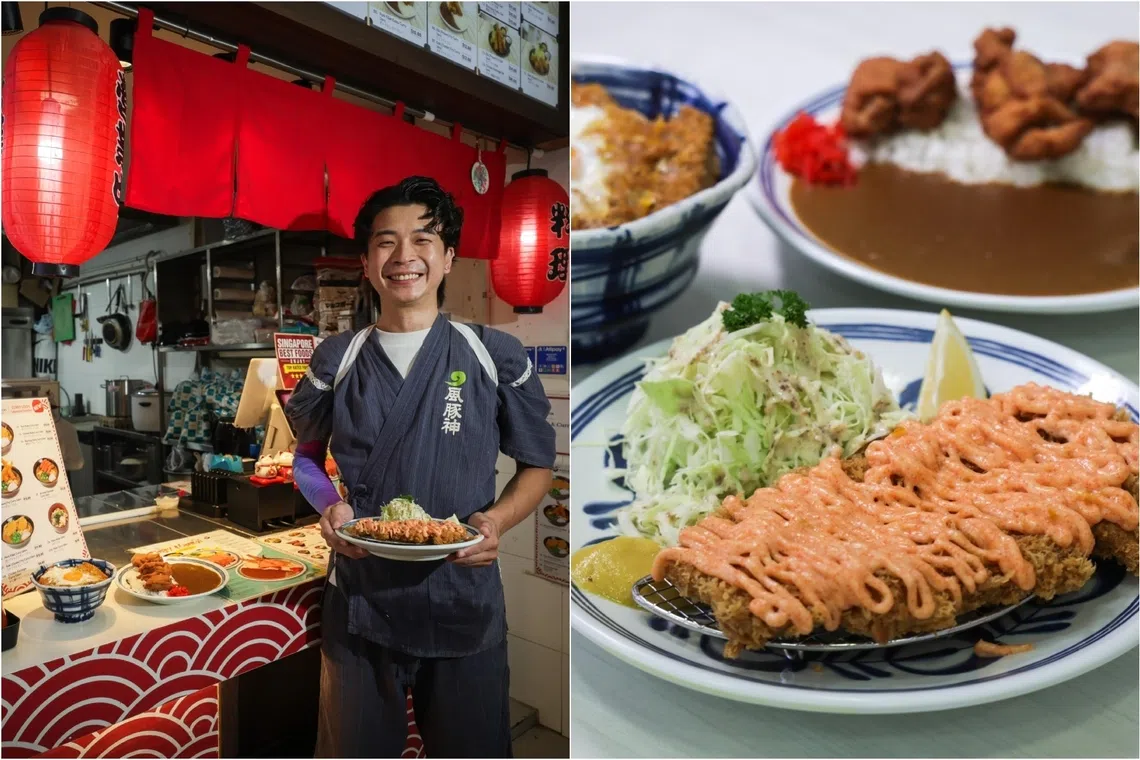
Mr August Wijaya now runs five outlets of his Maruhachi chain of tonkatsu stalls.
ST PHOTOS: GIN TAY
Follow topic:
- August Wijaya started Maruhachi in 2020, selling affordable tonkatsu in coffee shops, defying sceptics and achieving $3 million in annual revenue.
- Maruhachi expanded rapidly to 13 outlets, but faced losses due to high costs and reduced sales after the pandemic, leading to closures and stabilisation at five stalls.
- Mr Wijaya focuses on quality ingredients, staff incentives, and plans cautious expansion into foodcourts and franchising to grow the brand while prioritising quality.
AI generated
SINGAPORE – When Mr August Wijaya opened Maruhachi in Punggol in November 2020, sceptics doubted a stall selling $9.80 pork katsu don would survive in a coffee shop.
Tonkatsu, after all, was a Japanese restaurant dish, far removed from the affordable chicken rice and noodles in the heartland.
Four years later, the 42-year-old is still at the stove, battered but undeterred. His chain has weathered the swings of the Covid-19 pandemic, the boom of 13 outlets at its peak and subsequent closures that whittled Maruhachi down to five stalls.
The brand now brings in about $3 million in annual revenue.
Mr Wijaya, an Indonesian Chinese from Medan, never set out to start his own food business in Singapore.
In 2003, while pursuing a degree in information technology at Charles Sturt University in Sydney, Australia, he dropped out after his Japanese girlfriend became pregnant. They married soon after and he left for Nagoya – his wife’s home town – to find work.
Dishwashing at an izakaya there paid him more than he could earn in Indonesia as a fresh graduate.
“I could get $1,500 a month as a dishwasher, which was good money for someone with no experience who couldn’t speak the language,” he says.
After two years, he was promoted to kitchen helper, then moved to the Nagoya outpost of Outback Steakhouse as assistant kitchen manager and cook, where he learnt the ins and outs of running a food business.
The strict working culture in Japan left its mark.
“If work started at 7am, clocking in at 6.59am was considered late. I learnt to arrive 10 minutes early. The Japanese take their work seriously and that is why the quality of their goods and services is top-notch.”
In 2007, he was recruited to Singapore to be the kitchen manager at a Japanese restaurant in Clarke Quay, serving Nagoya-style curry udon. It closed after a year as locals preferred curry rice instead.
“That was my first lesson. If you don’t adapt to local tastes, you won’t survive.”
He went on to head the kitchen at Tonkatsu Ginza Bairin at Ion Orchard, a Tokyo brand specialising in tonkatsu since 1927. The restaurant has since shuttered.
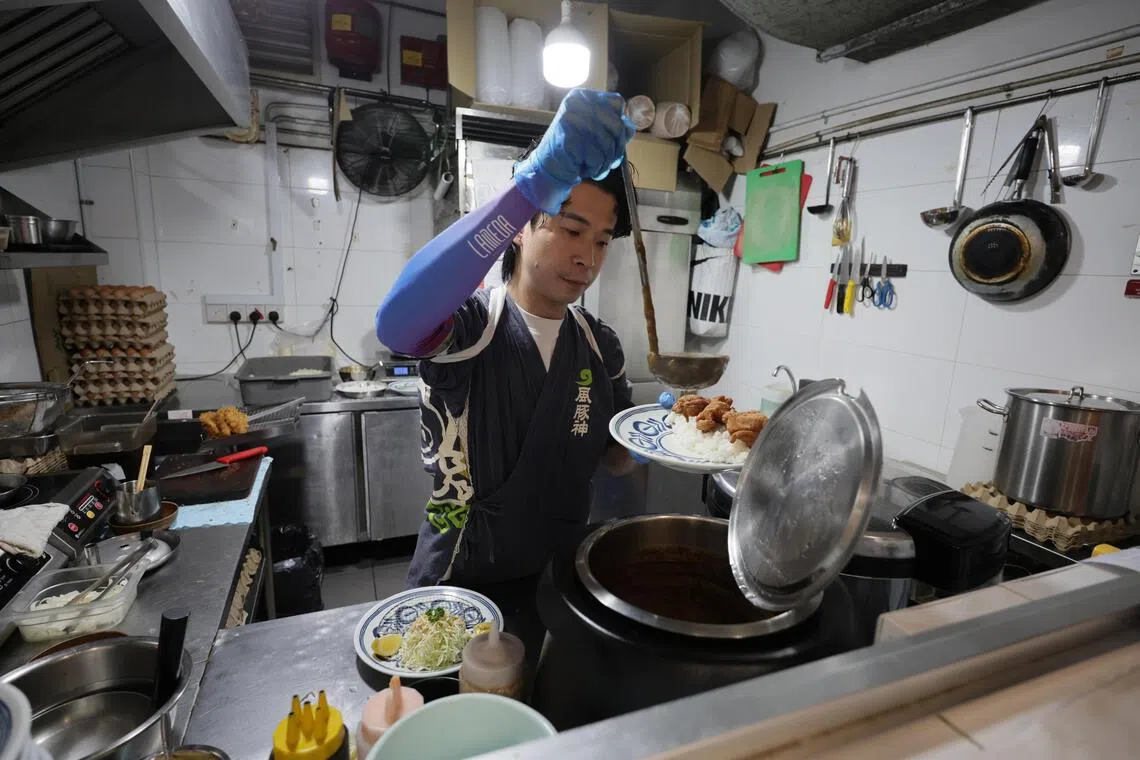
Mr August Wijaya cooked tonkatsu daily for nine years as the head chef of a tonkatsu speciality restaurant.
ST PHOTO: GIN TAY
Later, he became general manager at Hokkaido Marche, a Japanese foodcourt at Orchard Central. But in August 2020, with business shrinking and his salary cut by half, he left.
At the time, he was supporting his wife, his mother, as well as four children of school-going age. “I applied for jobs, but employers said I was overqualified. They offered me $3,000 when I was asking for $5,000. I had no choice but to start my own business.”
Taking a gamble
He chose to sell restaurant-quality tonkatsu in a coffee shop because “that was the only thing I knew how to cook professionally after nine years of being a head chef at a Japanese tonkatsu speciality restaurant”.
It was his best dish, but without the capital to open a full restaurant, he had few choices. “Renting a coffee-shop stall was my only option to start my own business,” he says.
He invested $30,000 of savings into a modest stall in Punggol, naming it Maruhachi – in Japanese, “maru” means circle and “hachi” is eight, a nod to infinity and his August birth month.
In the initial years, his wife, Ms Yoko Naito, now 51, worked the cash register, while he manned the stove.
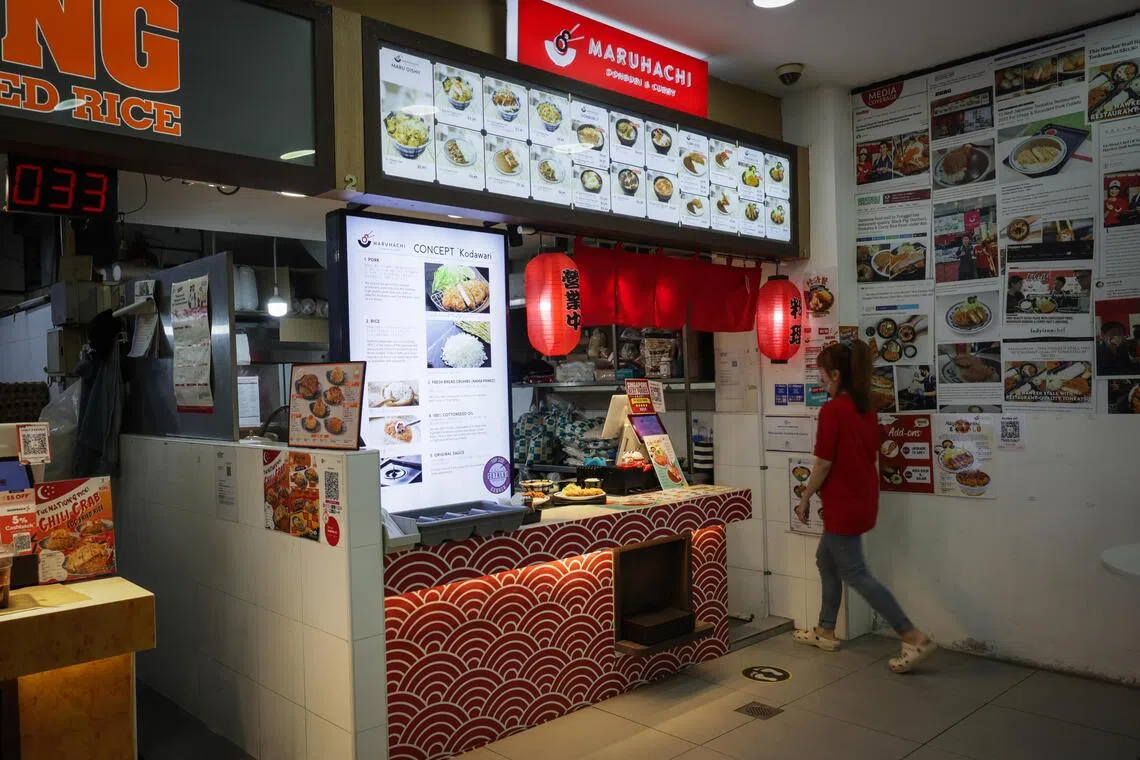
Mr August Wijaya initially focused on building his brand in coffee shops.
ST PHOTO: GIN TAY
The first four months were bleak. Gross sales were about $15,000 a month, but the stall ran at a $2,000 loss after costs. “We couldn’t even pay ourselves. We worked 12 hours a day, six days a week, with no staff. It was just my wife and me,” he says.
Ms Naito’s presence at the cashier gave the stall an edge – customers were delighted to see a Japanese face at a Japanese stall, even though it was Mr Wijaya doing the cooking. Many mistook him for Japanese, especially when he spoke to his wife in Japanese, which he became fluent in.
The turning point came in the fifth month, when influencers noticed his posts on social media. Business picked up and he finally hired help.
“People thought I was crazy. A $9.80 pork katsu don in a coffee shop was double the price of chicken rice. But once customers tried our food, they saw the value. Restaurant tonkatsu was over $20.”
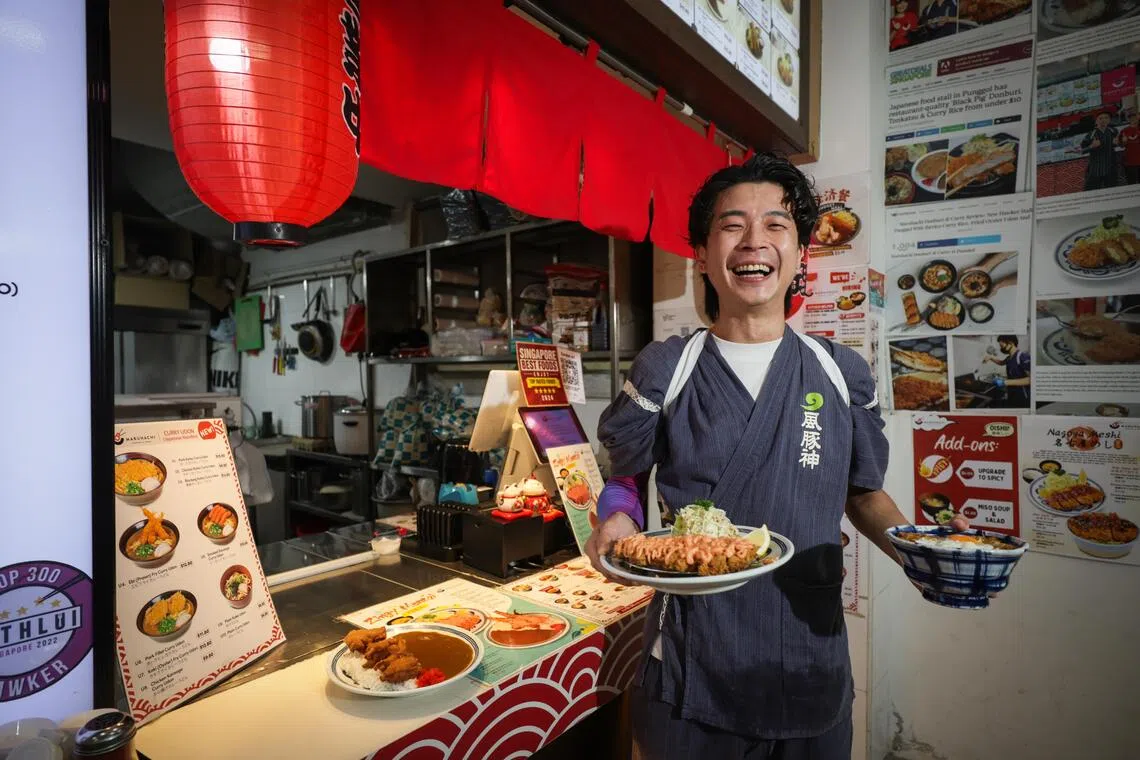
Mr August Wijaya’s gamble to sell restaurant-quality tonkatsu paid off when customers found his menu offered value for money.
ST PHOTO: GIN TAY
Pandemic boom
Expansion was swift once he set up a joint venture with a business partner in mid-2021, which provided the backing of a central kitchen. From then to early 2023, Maruhachi opened outlets almost every other month at locations from Havelock to Bukit Panjang, including a food hall at Changi Airport’s Terminal 4.
At its peak in early 2023, it had 13 outlets, over 40 employees and $5 million in annual revenue. But the success masked cracks.
“To outsiders, it looked like we were doing very well. But some outlets were losing up to $8,000 a month. For three months in 2023, company-wide losses reached $30,000 a month,” he says.
When travel gradually resumed from early 2023, sales fell by half. One by one, the weaker outlets shuttered and, by late 2024, Maruhachi was down to a handful of stalls.
Business gradually stabilised, except for another stall in Jurong West which shuttered in August.
“I would rather have five profitable stalls than 13 and lose money,” says Mr Wijaya.
Today, Mr Wijaya has 20 employees and still pulls the occasional 12-hour shift if any of them calls in sick. “I help with everything, even washing dishes. Labour shortage is a constant challenge. I may be the boss, but when needed, I have no qualms working alongside my employees.”
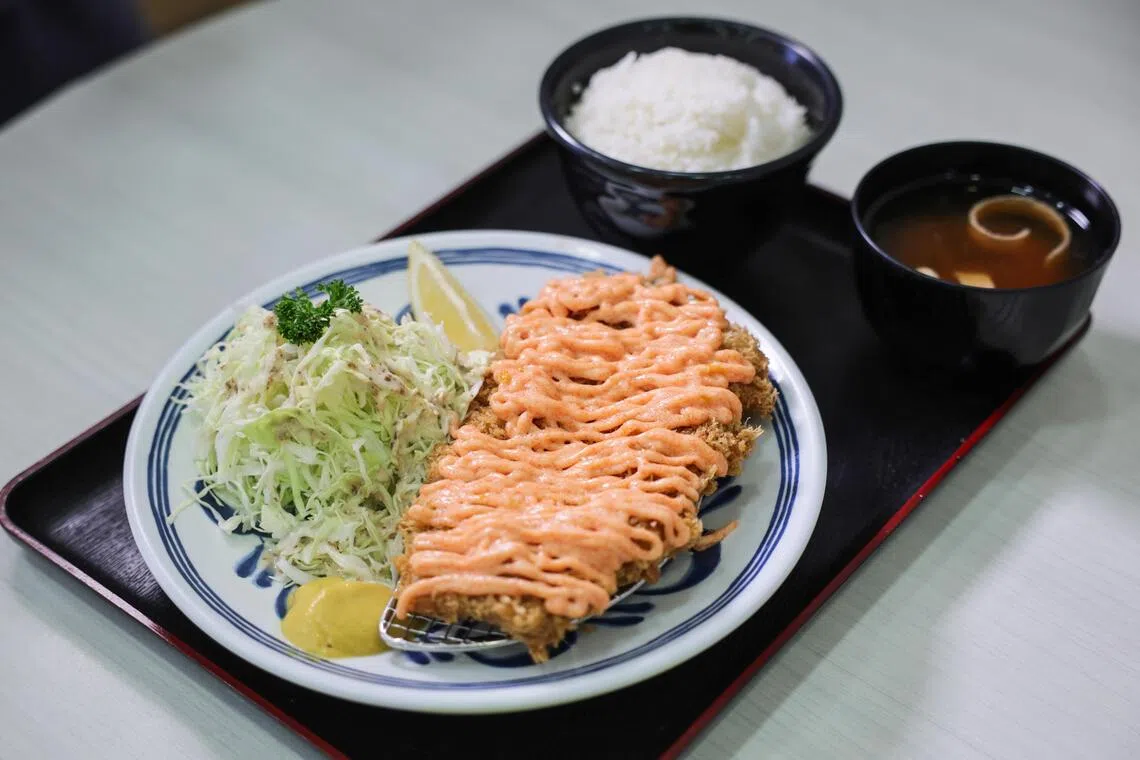
Mentai Kurobuta Katsu Set is among the new offerings on Maruhachi’s refreshed menu.
ST PHOTO: GIN TAY
In August, Mr Wijaya refreshed the menu with new offerings such as Mentai Kurobuta Katsu Set ($16.80), featuring premium US Kurobuta tonkatsu topped with mentaiko mayonnaise laced with yuzu.
There are also more affordable options like Chicken Karaage Curry ($7.30) and Special Pork Katsu Don ($12.80) served with a poached egg.
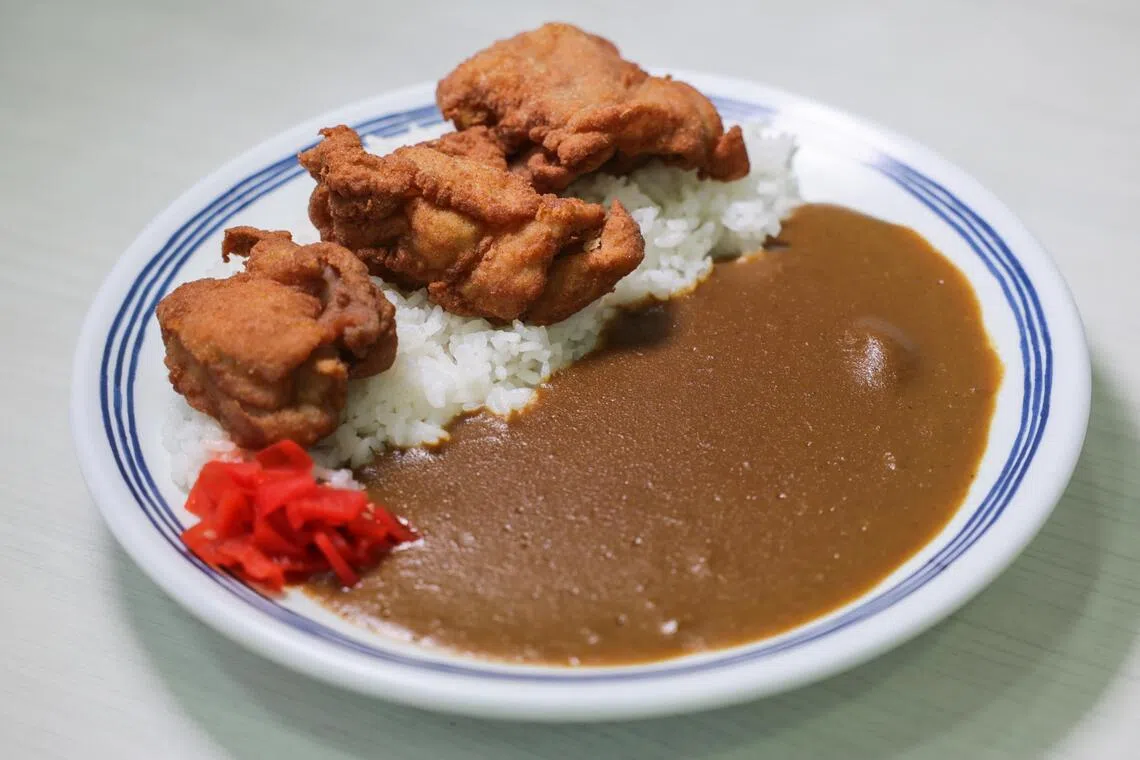
Chicken Karaage Curry are among the new offerings at Maruhachi.
ST PHOTO: GIN TAY
“I have not raised prices since 2020. Instead, I find ways to offer value without compromising quality,” he says.
Quality, to him, is non-negotiable. He insists on Japanese ingredients for sauces, from mirin to sugar. “Japanese sugar costs $3.90 a kilo, compared with $1.80 locally. But the taste is different – it is less sharp and blends better with soya sauce. That’s what makes our donburi sauce taste authentic.”
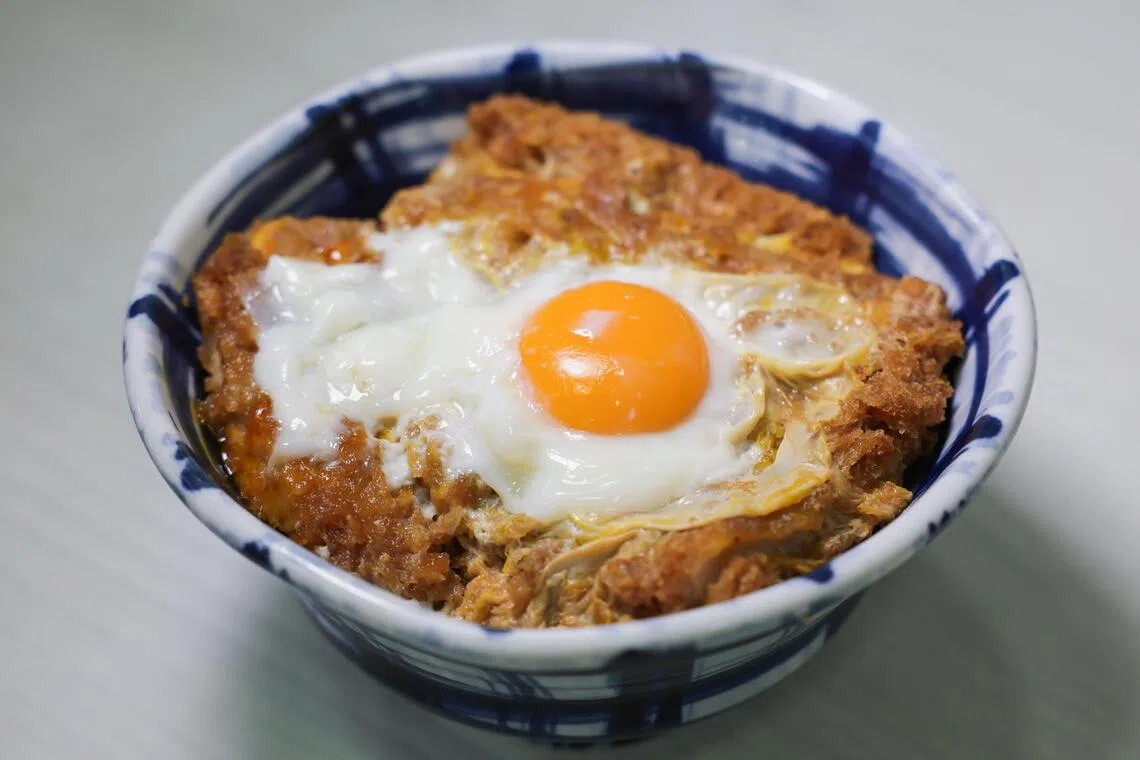
Special Pork Katsu Don was recently introduced on the menu in August.
ST PHOTO: GIN TAY
He also motivates his staff with performance incentives. “If the stall is profitable, incentives can go up to $1,000 a month. It makes them want to work hard and encourages loyalty.”
Citizenship and belonging
The year 2025 brought a personal milestone. After four failed attempts, he received Singapore citizenship in August. His wife, who works as a nail services instructor, and their four children – a son, 21, who was born in Japan, and three daughters aged 19, 16 and 14 – are used to life here.
His wife and son are Singapore permanent residents, while his three daughters are Singapore citizens. Mr Wijaya says: “I’ve been in Singapore for 18 years, longer than in Indonesia. My mother and brother are here too. This is home.”
He believes the coffee-shop market is now less promising than when he started. “People are willing to pay a bit more to eat in air-conditioned food courts. Rentals are also high.”
He plans to expand in 2026 by opening outlets in mall foodcourts, with two in the pipeline. He is also exploring franchising, both locally and abroad.
“I want more exposure for my brand and I want to make it bigger, but in a cautious way. I see potential in fast-casual concepts. People won’t go for fine dining every day, but they will often return for affordable fare.”
Even as he looks ahead, he knows better than to repeat past mistakes. “During the pandemic, we expanded too fast. This time, we will do it carefully. Quality must always come first.”
Tastemakers is a personality profile series on food and beverage vendors who are creating a stir.
Hedy Khoo is senior correspondent at The Straits Times. She covers food-related news, from reviews to human interest stories.


